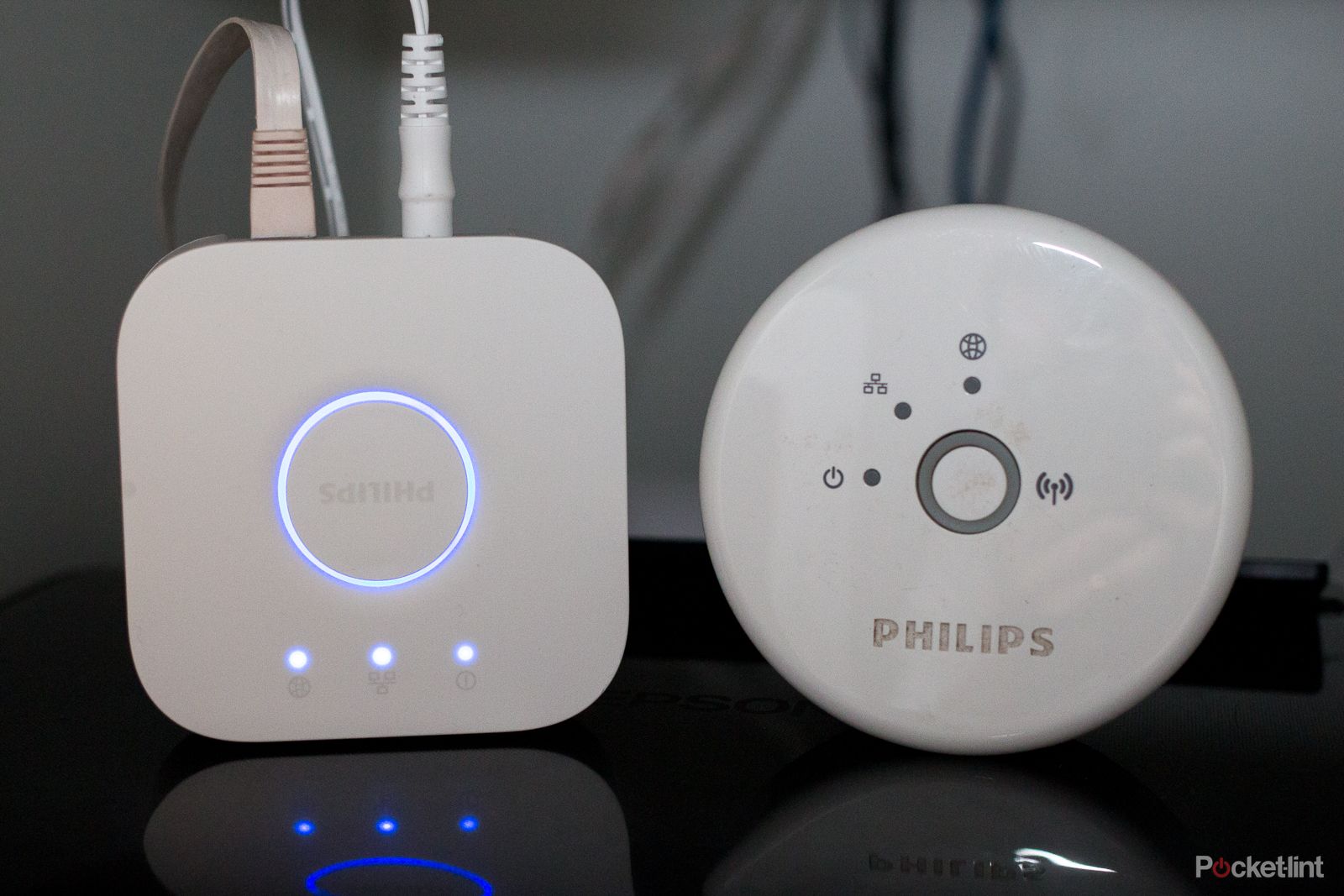Philips has introduced a new bridge for the Hue lighting system that adds Apple HomeKit functionality to the experience. The move means Apple users can now simply tell their lights to do things without touching their phone, opening the app, or pressing a button.
Our quick take
We really like the Philips Hue lighting system, and the variety of lighting options it delivers.
Siri of course is the fun element here that will make you feel like you are on the bridge of the Starship Enterprise asking the computer to do things for you and those things happening instantly.
The bigger picture will be HomeKit operability with other systems like sensors, heating, or security, and while that's still a long way off for many - given the lack of options in the UK (there are a few more in the US) we expect this eco-system to only grow with time.
If you are a current Hue user, £33 is a cheap price to pay for what should deliver plenty in the future, and voice control in the present.

Siri, turn off my lights
| FOR | AGAINST |
|---|---|
|
|
The new bridge 2.0 (£49.95) will be included as standard in the Hue Starter Kit, as well as, on its own for existing users at a 33 per cent discount until the end of December 2015.
What is Apple HomeKit?
Slowly rolling out in a number of devices, Apple HomeKit is a way of allowing you to control different devices around your home via Siri on your iPhone or iPad without actually opening any apps.
That could be telling your lights to turn off, or your thermostat to increase the temperature.
It's been slowly rolling out in the US and the UK with manufacturers like Elgato leading the charge. With the launch of iOS 9 Philips has entered the game.
You can find out more about Apple HomeKit via our detailed HomeKit feature that goes into a lot more depth about what the system can do and what it will do in the future.
Philips Hue Bridge 2.0: A new box, a new beginning
Before you start to try and talk to your lights you have to install the new Philips Hue Bridge 2.0 into your system. If you are a current Hue user, the new box replaces your old version.
Now square, rather than circular, and coming with a matte finish rather than gloss white, the experience is the same. You plug it into your router, press the button and follow the on-screen instructions in the app.
The actual design doesn't matter as you'll never see the device again, due to the fact that it will be hidden out of site.
Setup is easy, and getting up and running should be no problem at all. If you are just buying a replacement bridge Philips says you can swap it out without losing all your settings. Buying a starter kit and retro-fitting the hub into your existing system, we found, was a little more complicated.
Setting up Siri on Philips Hue
Once you've got the system up and running (you'll have to download a new version of the app) and your lights working as you want, regardless of Siri, you then have to tell the app and Siri which light you want to control and what scenes you want to be able to set via your voice.
You get full voice control over any of the lights or the scenes you've got set up although we've found that they do need to be called something very different to avoid Siri opting for the wrong one.
Calling one "relax" and another "relaxing" isn't a good idea. But once you've worked out what to call your scenes and your lights so they don't clash there is really nothing else to do apart from tell Siri what you want and watch your room lights change on your command.
Using Siri with Philips Hue
There are a number of voice commands available once you've got everything set up and running.
Say "Siri, dim the table lamp to 30 percent" and it does just that. There are a range of commands to learn like lighting a specific room by saying "Siri, turn on the bathroom light" or recalling a favourite scene such as 'Sunset' by saying "Sunset mode."
In practice and it's not only super easy, but really straight forward. We love the ability to tell Siri to dim a specific light for example.
Lights are just the beginning
While Philips isn't focused on anything outside of making a fantastic lighting experience for HomeKit users, where things start to get interesting is the ability to bring Philips Hue into a bigger automated system with HomeKit.
Philips say that could be one command that lets you unlock the front door, turn the lights on and the heating up for example, or a bedtime command that turns everything off with one command if you've got multiple devices all working together in your house.
At the moment those options are still to be counted on your fingers, but as more and more manufacturers like Philips get involved with HomeKit: each device needs to have a special HomeKit chip for it to work, the options will become more interesting.
Elgato Eve offers a number of sensors that could be programmed to work with Philips Hue to alert you to whether a window has been left open or the temperature outside has changed.
To recap
We really like the Philips Hue lighting system, and the variety of lighting options it delivers. Voice is just one more trick in its playbook.
